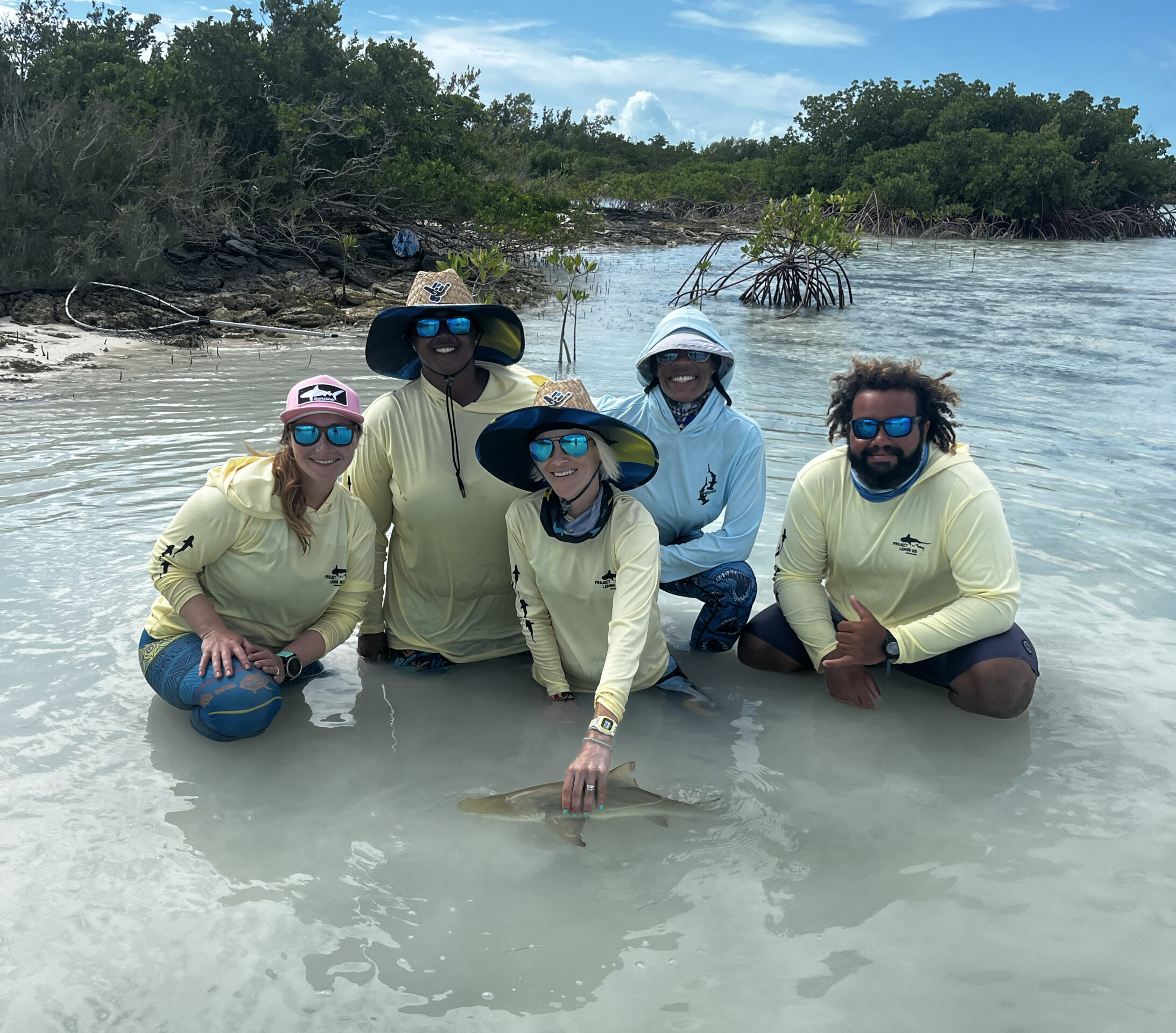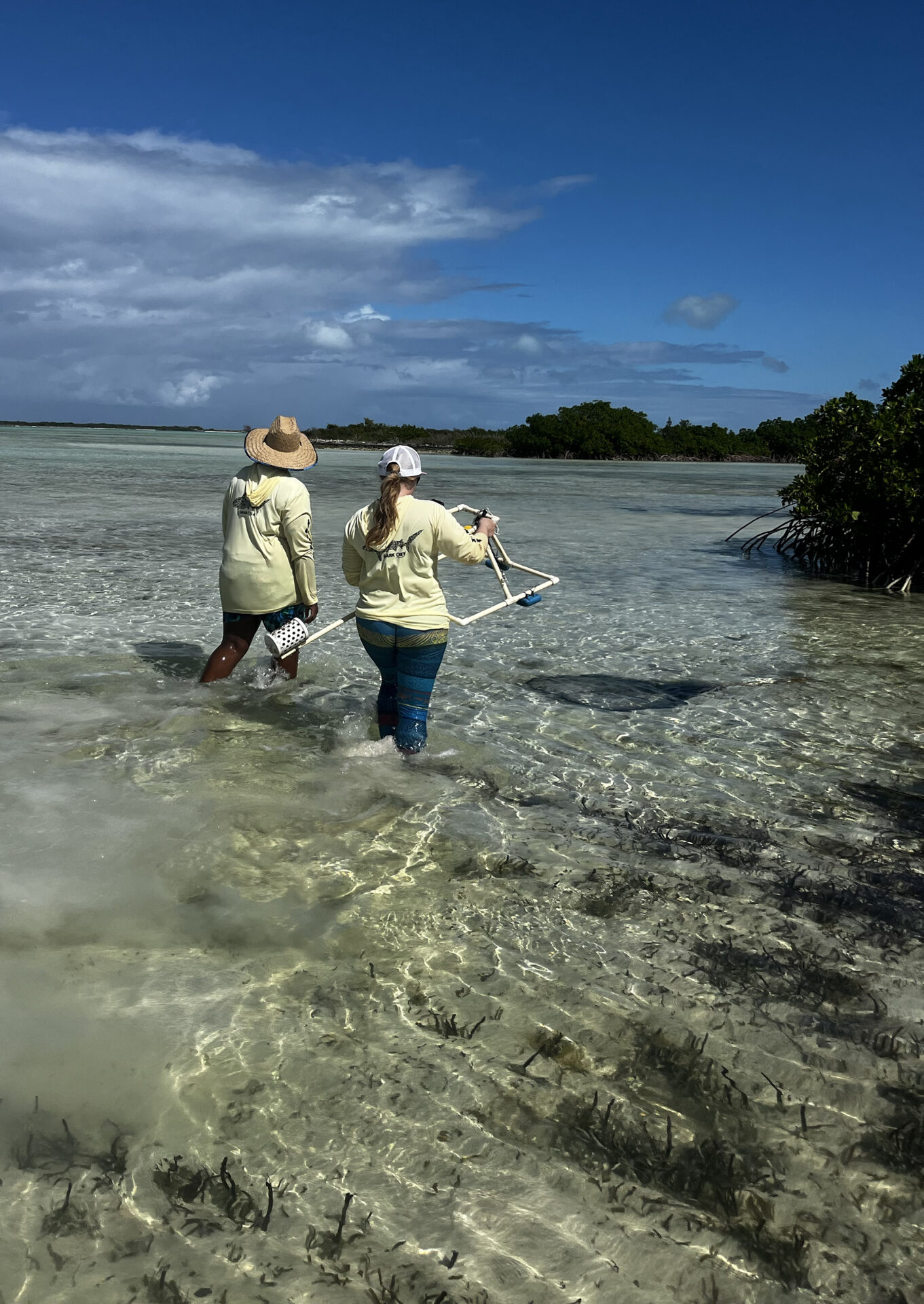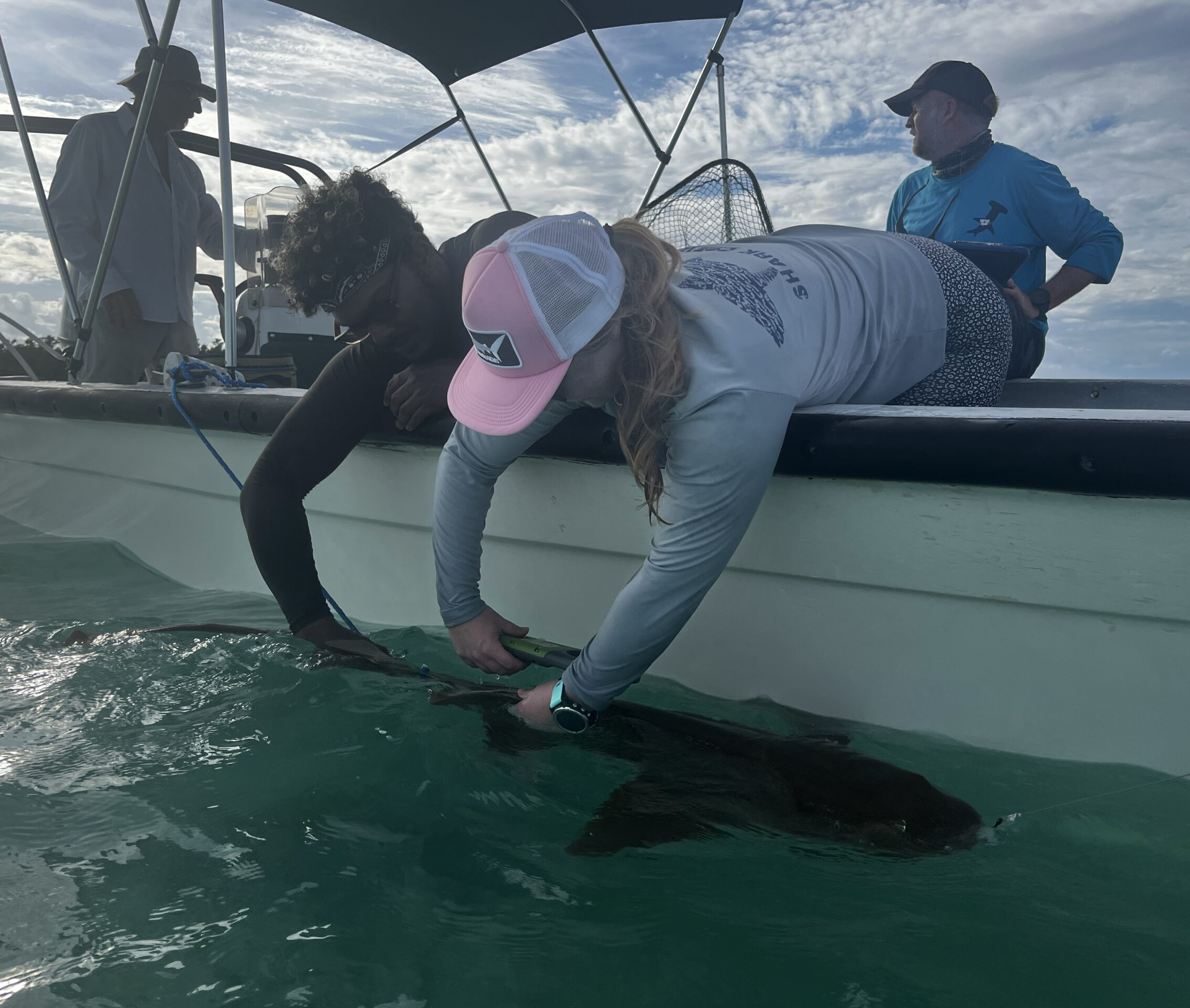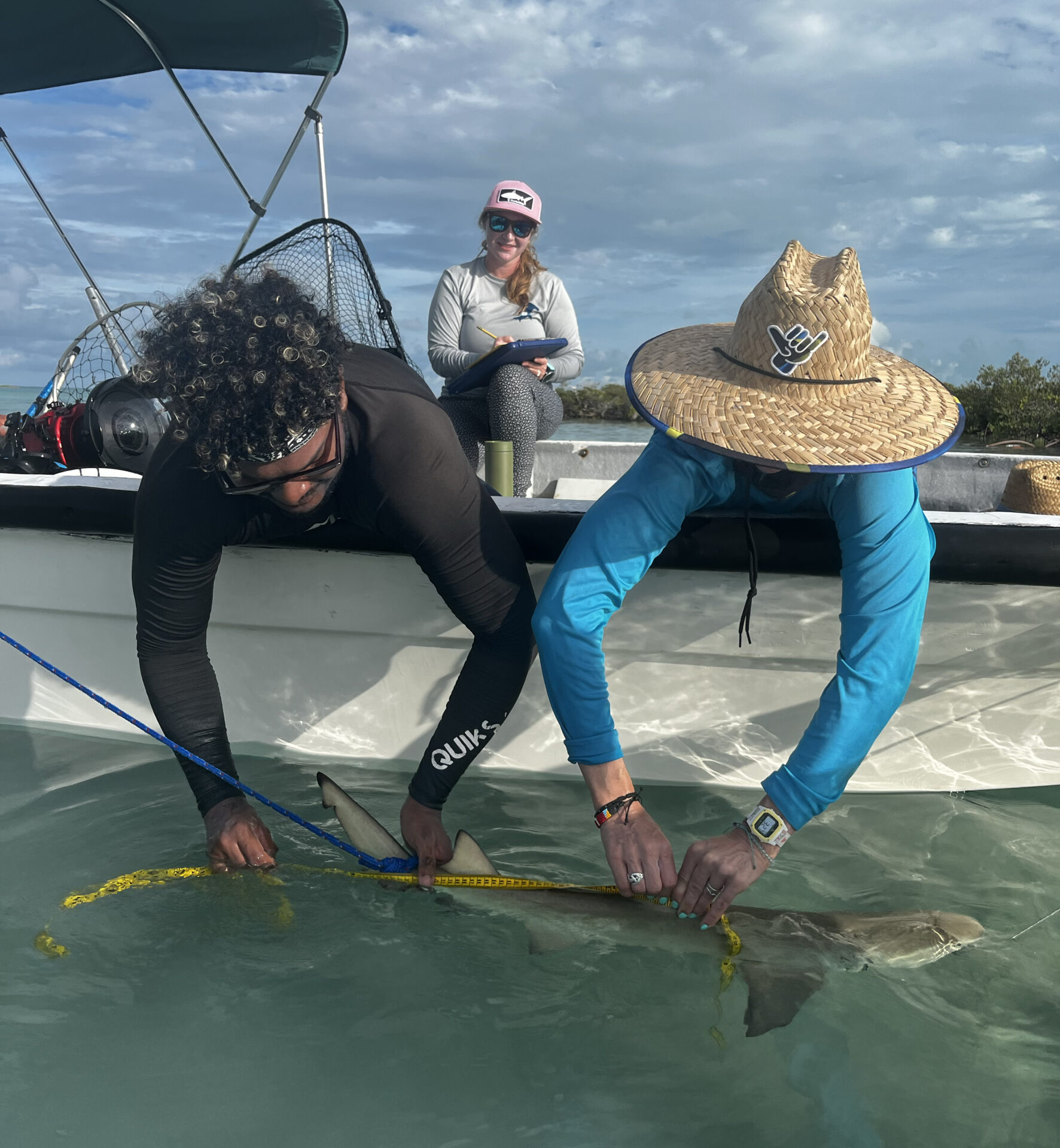When Life Gives You Lemons
Turks and Caicos is part of the same archipelago as The Bahamas and shares very similar ecosystems and species. Unlike The Bahamas though, the sharks around these islands are not protected. Very little research has been conducted on elasmobranchs in the region, so it is critical to establish a baseline from which we can assess population dynamics and habitat use. We also need to learn how local fisheries, development, and tourism activities are impacting these populations, particularly the juvenile lemon sharks.

Sharks4Kids with local team members ready to release a recap lemon shark. Photo © Ele Love
Discussions with the local community have been invaluable and have provided us with insight on not only areas to sample but also what species of shark are being caught and where. Shark is sold at restaurants, so we want to know what species and where it is coming from. Adult lemon sharks are targeted for food in certain areas of the outer islands and we are keen to understand how this might be impacting nursery areas in other parts. Reported sightings and activities also help us understand movement and distribution, as well as places to expand our research. Just before I was typing this, we actually received videos from our local team member Arenthia. The videos of sub-adult lemon sharks swimming in a shallow coral reef area we have not visited. This helps us plan for future visits as well as understand where different age classes are spending their time.

Candace and Michelle look for a place to drop a BRUV. Photo © Jillian Morris
Gill nets have been used traditionally for the capture of juvenile lemon sharks, but are illegal even for research in Turks and Caicos. We use drumlines at different depths and dip nets to capture smaller sharks in very shallow water. The combination of these two methods has proven effective for capturing our targeted size range.

Candace Fields teaches local partner Ele Love ( Big Blue Collective) how to take length measurements during a workup. Photo © Jillian Morris
For each shark, we take three length measurements (pre-caudal length, fork length, and total length). We measure girth just behind the pectoral fins. A DNA sample is taken from the trailing edge of the first dorsal fin. We then insert a PIT (Passive Integrated Transponder) tag just below the dorsal fin. We check for the presence and openness of the umbilical scar (lemon sharks give birth to live young connected to umbilical cords) to estimate age. We determine the sex and note any abnormalities or injuries before releasing the shark. Our DNA samples are sent to Dr. Kevin Feldheim for analysis and we are excited to get data back from our first batch. We know a lot about lemon shark birth, pupping grounds, and habitat use through extensive work done in The Bahamas and Florida. It will be interesting to see how Turks and Caicos compare. Questions we are hoping to answer include… How long are these juveniles staying in the small, but dense area of mangroves? How many female sharks are dropping pups here each year? Growth rates compared to other well-known study sites.

Michelle Jensen scanning for a PIT tag. Photo © Jillian Morris
It’s been an exciting start to the project and the best part has been seeing how engaged and excited the community is. We did our standard trip in May, but actually sampled during our recent November trip. We had some challenges in May (weather and boats), so we wanted to explore some areas we were not able to fish earlier in the year. Our smallest shark this year was 61.7 cm (total length) and our largest was 1.34 m (total length). We have also deployed BRUVs (Baited Remote Underwater Video systems) to get a better idea of species composition and distribution. We also use the videos to show local students what we are seeing.

Jillian teaching DECR staff member Chris how to do a scientific workup. Photo © Duncan Brake
One of the major goals of the project is to engage and involve the local community and during both trips this year we’ve done just that. We’ve taken local students, educators, and members of the permitting agency (Department of Environmental and Coastal Resources) into the field with us. We’ve worked alongside our local partners Big Blue Collective, Edward Gartland Youth Centre, and TC Reef Fund to engage even more of the community. I am incredibly proud of what we have done so far and am excited for the future.
